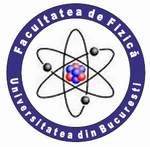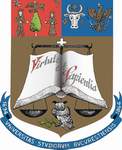| |
 |
UNIVERSITY OF BUCHAREST
FACULTY OF PHYSICS Guest
2025-10-05 22:31 |
 |
|
|
|
Conference: Bucharest University Faculty of Physics 2025 Meeting
Section: Biophysics; Medical Physics
Title:
Optimisation of CT simulation scanning protocols – Advantages in stereotactic radiosurgery and stereotactic body radiation therapy
Authors:
Mihai-Ștefan BÂRHALĂ (1,2), Tia POPESCU (1,2)
*
Affiliation:
1) Faculty of Physics, University Of Bucharest
2) Neolife Bucharest
E-mail
mihai.barhala@gmail.com
Keywords:
Radiotherapy, Radiosurgery, CT Simulation, Scanning Protocols
Abstract:
Given the continue desire to increase accuracy and precision in the delivery of radiotherapeutic treatments, methods are needed to minimize the uncertainties that can arise throughout the treatment chain. One of the key elements in the accuracy of treatment delivery is the images acquired with the CT scanner. Based on this information, the geometric localization of the volume to be irradiated, generically referred to as the target volume, as well as the virtual calculation of dose propagation inside the patient are performed.
With the technological evolution, it is necessary to update the procedures used for patient scanning, given the increased detection and processing capabilities, in order to obtain more qualitative and ultimately more clinically conclusive data.
This issue becomes increasingly significant in short session treatments (1-5 fractions) where high dose per fraction (5-20) Gy are delivered. Given the low number of fractions, relative to conventional treatments with around 20–25 fractions, the random element of error starts to become non-mediating [1] and can produce significant deviations in treatment delivery if this aspect is not adequately compensated for. Also, treatments with high dose per fraction (>5 Gy) require specific dose constraints [2] for healthy tissues, due to different radiobiological phenomena compared to those applied for conventional fractionation (1.8-2) Gy, which may induce significant side effects.
The aim of this work is to test and optimize the CT scanner acquisition and processing parameters so that the data or data series used to perform the entire chain of processes will ultimately produce a decrease in the uncertainty of treatment delivery. Specifically, the available reconstruction algorithms [3] will be tested as well as the modification of slice thickness, slice-to-slice thickness and scan diameter.
References:
[1]. Van Herk M. Errors and margins in radiotherapy. Semin Radiat Oncol. 2004;14(1):52-64. doi:10.1053/j.semradonc.2003.10.003
[2]. Diez P, Hanna GG, Aitken KL, et al. UK 2022 Consensus on Normal Tissue Dose-Volume Constraints for Oligometastatic, Primary Lung and Hepatocellular Carcinoma Stereotactic Ablative Radiotherapy. Clin Oncol (R Coll Radiol). 2022;34(5):288-300. doi:10.1016/j.clon.2022.02.010
[3]. Davis, A. T., Muscat, S., Palmer, A. L., Buckle, D., Earley, J., Williams, M. G. J., & Nisbet, A. (2019). Radiation dosimetry changes in radiotherapy treatment plans for adult patients arising from the selection of the CT image reconstruction kernel. BJR open, 1(1), 20190023. https://doi.org/10.1259/bjro.20190023
Acknowledgement:
-
|
|
|
|

